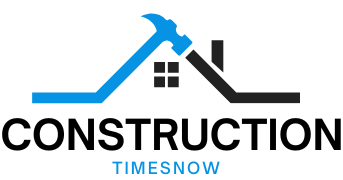Westpac-Melbourne Institute Consumer Sentiment – April 2025 – Realty.com.au Blog

Monday Market Recap
By: Cameron Kusher
This week we received data on consumer sentiment, business confidence and conditions, overseas arrivals and departures and auction clearance rates. We also got some major announcements from Federal Labor and Coalition on housing which I will write more about next week.
As always these insights are focused specifically on the property sector so please, share, subscribe, comment and give me any feedback you might have.
Key insights
- The Consumer Sentiment Index was -6% in Apr 25, falling from 95.9 points to 90.0 points with the announcement of tariffs throughout the survey weak leading to a slump in confidence.
- All five components of the Consumer Sentiment Index were lower over the month with only family finance over the next 12 months 101.6 points showing more optimism than pessimism (above 100 points).
- The Time to Buy a Dwelling Index was at 85.7 points and -6.5% over the month but +13.8% over the year while the House Price Expectations Index was 153.4 points which was +4.7% over the month and -4.8% over the year.
What does it mean?
Consumers remain more optimistic then pessimistic and were clearly shaken by the tariff announcements now that they have been delayed next months’ release will be important to monitor. Respondents remain more pessimistic than optimistic that it is a good time to buy a dwelling (likely due to the cost and where interest rates sit) while they expect prices to continue to rise which I believe is a reasonable expectation as interest rates ease through the year.
NAB Monthly Business Survey – March 2025
Key insights
- Business confidence was -1 index point in Mar 25 reaching -3 points and well below its long-term average.
- Business conditions on the other hand increased from +3 index points to +4 index points but also remain below the long-term average with profitability (+1 point). trading (-1 point) and employment (unchanged) all showing no change or minimal change over the month.
- The quarterly change in purchase costs (+1.4%) and final product prices (+0.5%) were steady while the change in labour costs slowed from +1.6% to +1.5%. Meanwhile, capacity utilisation lifted over the month from 82% to 82.9%.
What does it mean?
Business confidence and conditions remain below their long-term average indicating that businesses are still finding conditions more difficult than usual. Cost escalations are easing but most businesses are operating close to their capacity reflecting the tight labour market. The activities of the past few weeks will probably see business confidence and conditions deteriorate over the coming months. For the property sector weak business conditions can rear their head by less demand for commercial space, downsizing or amalgamation of businesses.
ABS Monthly Overseas Arrivals and Departures – February 2025
Key insights
- Net arrivals to Australia in Feb 25 reached 352,810 which was +0.2% over the month and +19.6% over the year.
- Net permanent and long-term arrivals in Feb 25 reached an historic high of 111,740 which was +158.4% over the month and +6% over the year. Annual net permanent and long term arrivals reached 438,860 which was +1.5% over the month and -12% over the year. Net permanent and long-term arrivals are still well above long-term average levels.
- Although permanent and long term arrivals are still elevated there has been a significant fall in net temporary student arrivals (-62.8% over the year) and temporary work visa arrivals (-45.4% over the year) while there has been an uptick in permanent family visa arrivals (+43.6%).
What does it mean?
While we’re seeing a slowing of net permanent and long-term arrivals to Australia they remain elevated and way above pre-pandemic levels. In the lead-up to the election the Coalition have a policy to reduce net overseas migration although it is not clear how that will be achieved. It is undeniable that at the moment population growth is way too high when you consider our ability to cater to that population growth through constructing hew homes and new infrastructure. Should this continue it will create further pressure on housing, mostly felt in the rental market but longer term the impact will also be felt in housing prices.
CoreLogic Preliminary Auction Clearance rates – week ending 13 April 2025
Key insights
- It was a bumper week for auctions with 3,146 auctions which CoreLogic reported was the highest volume since the week prior to Easter last year.
- With more auctions, preliminary clearance rates fell from 70.7% the previous week to 64.8% last week.
- Preliminary auction clearance rates were lower last week across all of the major auction markets, Sydney (65.5% vs 69.1%), Melbourne (67% vs 72.9%), Brisbane (56.7% vs 58.3%), Adelaide (62.1% vs 87.8%) and Canberra (41% vs 63.3%)
What does it mean?
With a bumper volume of auctions in the week prior to Easter clearance rates predictably fell. Volumes will be much lower next week and clearance rates will likely be fairly steady. Thereafter we should continue to see a solid volume of auctions taking place and preliminary clearance rates in the 60% to 70% range.









